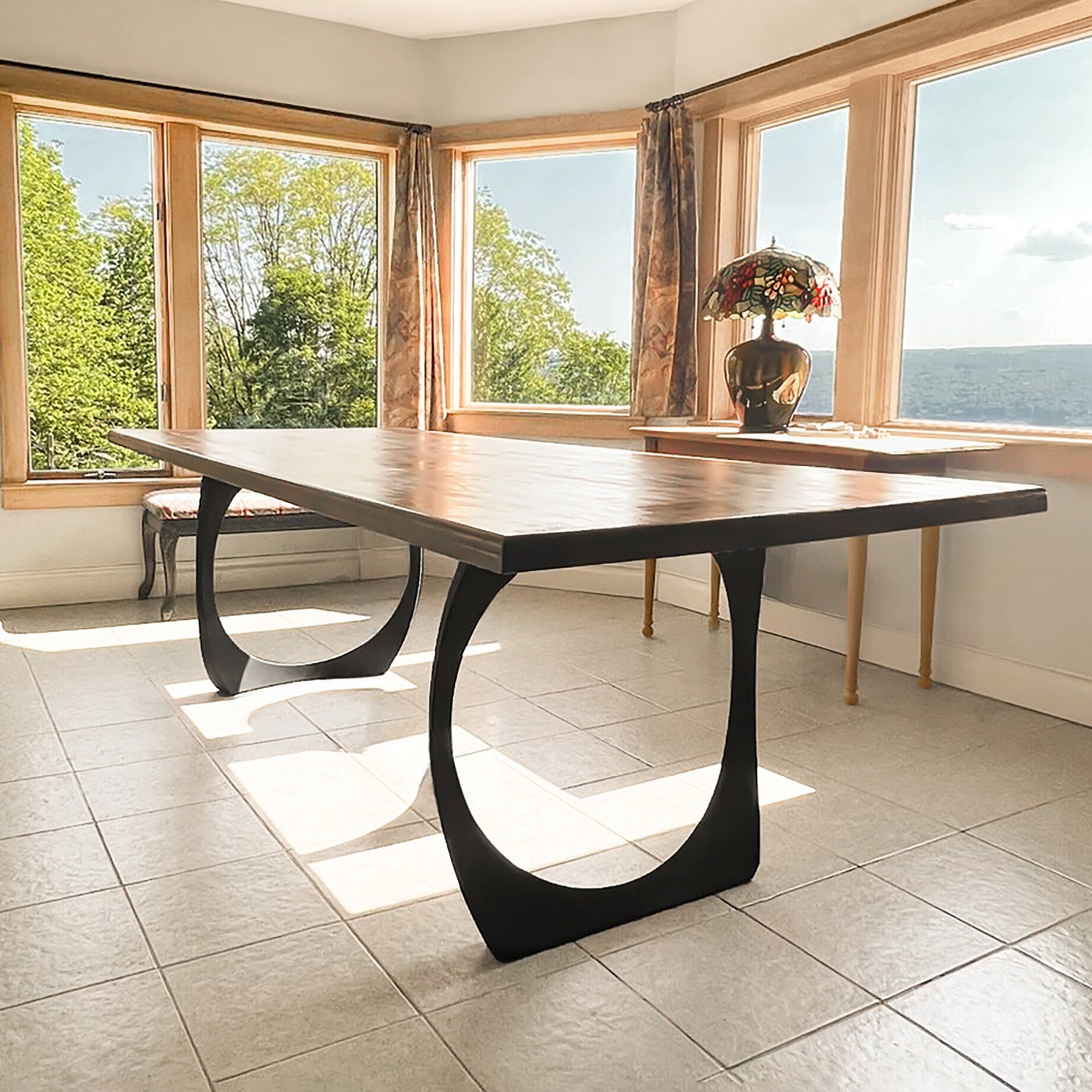The Ultimate Guide to Selecting the very best Styles for Table Legs
Picking the ideal designs for dining table legs is a nuanced process that needs stabilizing aesthetic allure with functional factors to consider. Customized options offer an opportunity for personal expression, guaranteeing your table comes to be a special focal factor.
Modern Dining Table Legs
In the world of modern furniture style, modern dining table legs stand apart for their smooth and cutting-edge looks. Identified by clean lines and minimalist kinds, these legs commonly utilize products such as stainless steel, chrome, and toughened up glass to produce an innovative aesthetic allure. Not just do they improve the overall elegance of the dining table, yet they likewise contribute to its architectural honesty and functional convenience.
Among the vital features of contemporary table legs is their adaptability to various table tops, from marble and glass to timber and engineered surfaces. Designers regularly try out geometric shapes, including angular, conical, and even sculptural kinds, to include an unique touch per piece. This strategy not just ensures a modern look yet additionally permits greater modification to match private preferences and interior style.
Modern eating table legs also highlight convenience of upkeep and toughness. The usage of high-grade, corrosion-resistant materials ensures durability while requiring marginal maintenance. These legs are typically designed to assist in fast setting up and disassembly, straightening with the modern customer's demand for comfort and adaptability. Thus, modern table legs embody both kind and function, making them a popular selection in today's design landscape.
Rustic Farmhouse Designs
While modern table legs mesmerize with their sleek, minimal styles, rustic farmhouse styles provide a contrasting yet equally compelling approach to furniture looks. Rooted in simpleness and performance, rustic farmhouse table legs usually include durable, solid wood buildings that evoke a feeling of heat and practice. These designs typically incorporate reclaimed or distressed timber, adding personality and a vintage beauty to any kind of dining space.
Among one of the most distinguishing features of rustic farmhouse table legs is their significant, strong look. Typically crafted from oak, want, or various other sturdy timbers, these legs can consist of a variety of shapes, from straight and square to elegantly transformed or tapered styles (dining room table legs). The craftsmanship stresses toughness, with hand-finished details that highlight the all-natural grain and imperfections of the wood, making each piece uniquely attractive
Furthermore, rustic farmhouse legs regularly use time-honored joinery methods, such as mortise and tenon joints, guaranteeing security and longevity. This style is particularly well-suited for producing a cozy, inviting environment, excellent for family events and communal dining experiences. By incorporating rustic farmhouse table legs, one can effortlessly mix capability with timeless looks, achieving an ageless allure that enriches the dining atmosphere.
Timeless and Ageless Styles
Long-lasting style defines traditional and timeless table leg layouts, seamlessly mixing practice with class. These designs catch the significance of sustaining charm, commonly including detailed craftsmanship that admires historical designs while maintaining a contemporary appeal (dining room table legs). The visual balance achieved with such legs ensures they stay appropriate and fashionable across various indoor setups, from standard to modern homes

Additionally, the adaptability of classic eating table legs enables them to match different tabletop designs, producing a natural and harmonious eating experience. Their timeless nature makes sure that they hold up against changing patterns, making them a useful investment for any type of dining area. Whether you look for underrated refinement or grand beauty, timeless dining table legs provide a best blend of type and function, boosting the total visual of your dining location.
Personalized and Special Alternatives
When it comes to eating table leg styles, custom and unique alternatives provide an unique method to display personal preference and creative thinking. These selections enable house owners and designers to move beyond traditional designs, creating a table that really reflects individual style and the general theme of the eating room. Personalized legs can read review be crafted in a myriad of shapes, sizes, and patterns, from detailed makings to modern-day geometric types, allowing countless opportunities.
One-of-a-kind table legs can work as a focal point in an area, attracting focus and stimulating conversation. For example, legs fashioned to resemble tree branches can bring a touch of nature indoors, while sculptural metal legs can convey a modern and industrial style. One more prominent pattern is incorporating multimedias, such as integrating wood with steel or glass, to create a striking contrast and included aesthetic rate of interest.

Material and Complete Selections
Selecting the best material and coating for eating table legs is critical to achieving his explanation the wanted aesthetic and capability. The option of materials can substantially impact the table's longevity, upkeep, and general design. Typical materials for eating table legs include timber, steel, and acrylic.
Metal legs, such as those made from stainless steel or iron, provide a contemporary and industrial look. Acrylic legs, although much less typical, provide a contemporary and airy feeling, perfect for smaller rooms or minimalist layouts.
Wood legs can be stained to boost their natural grain or painted for a more consistent appearance. Metal legs may be brightened for a streamlined surface or powder-coated for included defense versus wear and rust.
Eventually, the choice of product and finish should line up with the table's general layout, use needs, and the existing décor of the dining space.
Conclusion
The option of dining table legs dramatically affects the aesthetic and performance of a dining area. Modern styles provide smooth, minimalist charm, while rustic farmhouse layouts provide warmth and personality. Classic and Going Here timeless layouts add sophistication through complex workmanship. Personalized options enable customized expression. The option of products and surfaces additionally improves the general appearance and longevity. Mindful factor to consider of these variables ensures an unified and aesthetically enticing eating location.